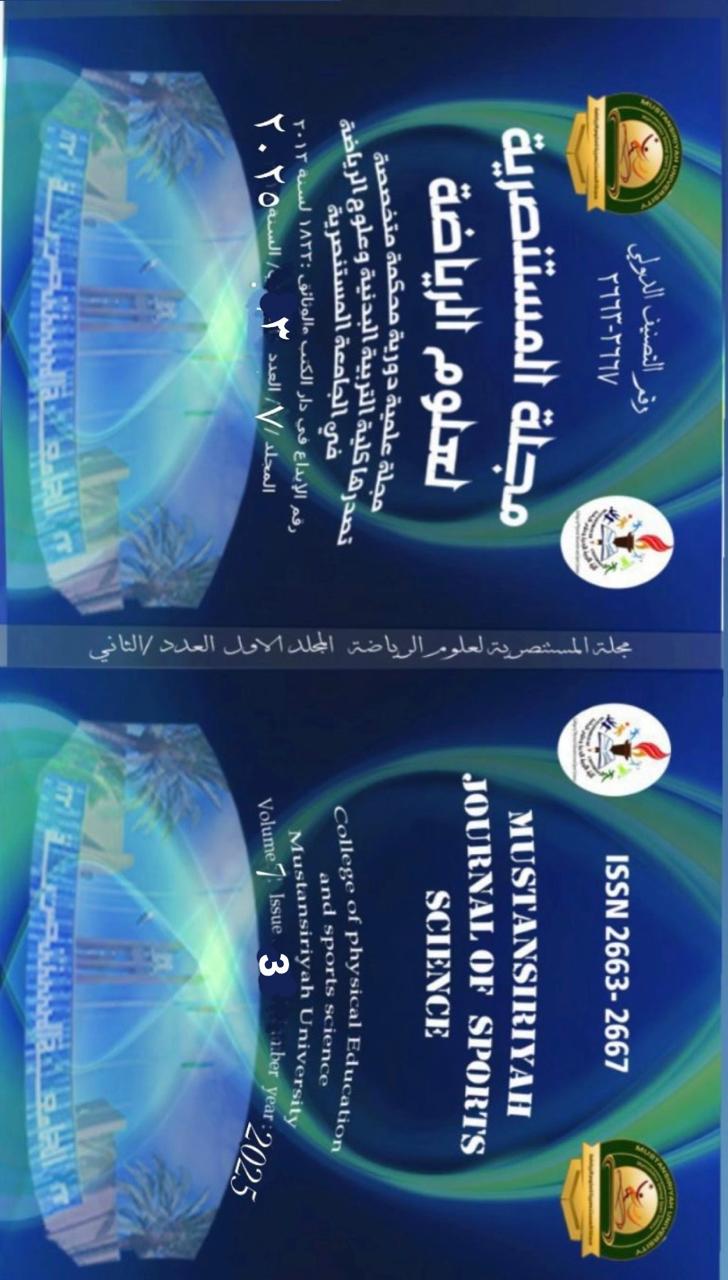The Impact of Specialized Alternating Variable-Camber Paddle Exercises on Developing Strength Endurance and 5000-Meter Kayaking Performance in Elite Athletes
Main Article Content
Abstract
This study aimed to investigate the impact of specialized exercises using variable-camber paddles with an alternating method on developing strength endurance and improving 5000-meter kayaking performance for advanced athletes. Methods: An experimental approach was applied to a sample of 8 elite kayakers from Al-Rusafa Training Center. A 12-week training program (3 sessions/week) was implemented, incorporating high/low-camber paddles in interval and continuous training. Performance was evaluated through four tests: 1-minute maximal paddling, weight pulling, repetition with rest, and 5000-meter race time. Results: Significant improvements (0.05) were observed in all metrics: distance in the maximal paddling test increased from 250 to 255 meters, repetitions in the weight-pulling test rose from 55 to 59, fatigue rate decreased from 12% to 0.7%, and race time improved from 23.41 to 23.32 minutes. Conclusions: The exercises enhanced the activation of slow- and fast-twitch muscle fibers, improved neuromuscular coordination, and optimized energy distribution, supporting long-distance performance.
Downloads
Article Details

This work is licensed under a Creative Commons Attribution-NonCommercial 4.0 International License.
References
• علي عبد اللطيف. (2014). تأثير التحكم في السرعة وتوزيع الجهد على الانجاز لفعالية 500 م تجديف الكاياك. Journal of Physical Education، 26(1)، 154-165.
Baechle, T. R. (2008). Essentials of Strength Training and Conditioning (3rd ed.). Human Kinetics, 148-187.
Baker, D. (2001). The effects of an in-season of concurrent training on the maintenance of maximal strength and power in professional and college-aged rugby league football players. Journal of Strength and ConditioningResearch, 15(2),172–177. https://doi.org/10.1519/00124278-200105000-00010
Fernández-García, Á. S.-M. (2020). Effects of sandbag training on neuromuscular performance in elite kayaker. International Journal of Sports Physiology and Performance, 15(7), 1014-1021. https://doi.org/10.1123/ijspp.2019-0548
Haff, G. G. (2018). Periodization of Training for Sports (3rd ed.). Human Kinetics, 55-94.
Hagerman, F. C. (2000). Physiology of competitive rowing. In Essentials of Strength Training and Conditioning (2nd ed). Human Kinetics, 443-456.
Smith, T. B. (2018). Performance indicators in 1000-m competitive rowing. International Journal of Sports Physiology and Performance, 13(2), 156-162. https://doi.org/10.1123/ijspp.2016-0687
Suchomel, T. J. (2018). The importance of muscular strength in athletic performance. Sports Medicine, 46(10), 249-149. https://doi.org/10.1007/s40279-016-0486-0
Bompa, T. O., & Haff, G. G. (2009). Periodization: Theory and methodology of training (5th ed.). Human Kinetics.
Schöllhorn, W. I., Beckmann, H., & Davids, K. (2010). Explaining the science behind differential learning. International Journal of Sports Science & Coaching, 5(4), 553-560. https://doi.org/10.1260/1747-9541.5.4.553
Zatsiorsky, V. M., & Kraemer, W. J. (2006). Science and practice of strength training (2nd ed.). Human Kinetics.
International Canoe Federation. (n.d.). Kayak disciplines. Retrieved from https://www.canoeicf.com

